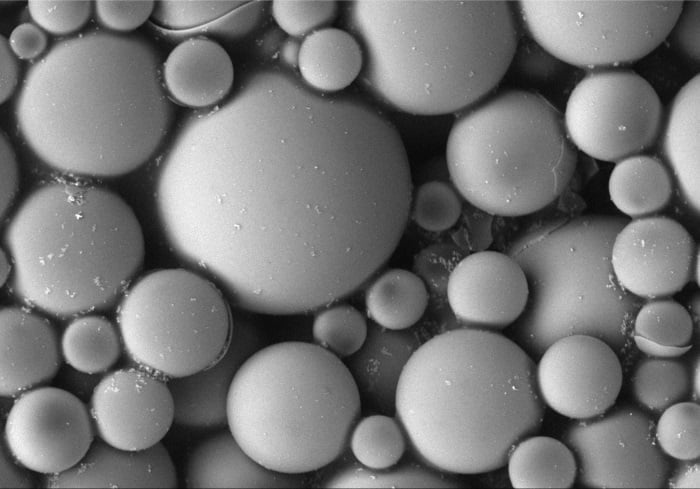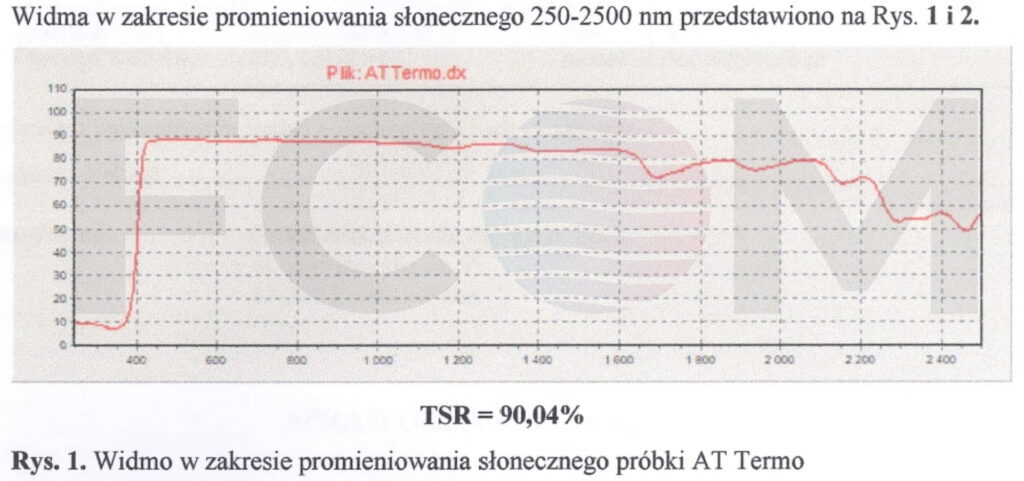How it works?
Thermal insulation coating
In nature, there are 3 mechanisms of heat transfer – conductivity, radiation and convection. The thermal insulation properties of traditional materials such as polystyrene or wool are based only on heat conduction, while the other two mechanisms are omitted.
In nature, there are 3 mechanisms of heat transfer – conductivity, radiation and convection. The thermal insulation properties of traditional materials such as polystyrene or wool are based only on heat conduction, while the other two mechanisms are omitted.
Conductivity

Thermal insulation paint is a composite material based on acrylic resin, reinforced with ceramic microspheres, in which there is a negative pressure close to a vacuum. The negative pressure in the microspheres increases the thermal resistance, and the addition of microspheres of different diameters results in a better filling of the paint. There are several dozen microspheres per paint, which results in an increase in thermal resistance at the transition from one phase to another.
A similar phenomenon has been used when designing composite windows, where solutions with triple glazing are already used. If we compare a 5 cm thick glass pane with five 1 cm thick glass panes, then we observe considerably greater heat-insulating effect at the 5-layered partition.
Reduction of heat transfer on the surface of the thermal insulation coating
Among the known insulation materials, polystyrene boards, which consist of many expanded polystyrene granules and create a cellular structure, are characterized by a similar structure and principle of operation. In thermal insulation paint, the function of polystyrene granules is performed by glass microspheres with very small diameters.
Thanks to them, the cross-section of the insulation has been reduced from centimeters to millimeters, which has created new possibilities in the field of thermal insulation of old and new buildings and structures.
Lambda, i.e. the parameter used by the construction market, is the thermal conductivity coefficient. For polystyrene, it is a value of around 0.030 to 0.045 W/(m*K), and in the case of wool, the coefficient ranges from 0.032 to 0.038 W/(m*K).
Our products are characterized by computational thermal conductivity coefficients with the following values:
- GoTherm® – 0,00053 W/(m*K)
- AT Termo® – 0,00032 W(m*K)
Radiation

The radiation is reflected on the surface and inside the microspheres contained in our paints. The reflectivity of the coating, which is determined by the TSR (Total Solar Reflectance) coefficient, is as much as 90%.
The phenomenon of “urban heat islands”, overheated attics and buildings heated to very high temperatures are the effects of solar radiation. This disadvantageous effect can be reduced by using a thermal insulation paint that acts as a shield and reflects the radiation.
Reflection of thermal radiation from the surface of the thermal insulation coating
In countries with high average temperatures, it is popular to paint roofs white.
Our paints standard color is white, but they can be colored in any way, and what is very important, thanks to the use of innovative solutions, we managed to keep the TSR ratio at a high level.
A very well-known application of the reflective insulator is the once popular aluminum “screens” inserted behind the radiator. This solution allowed for more effective use of the heat emitted by the radiators. With our product, you can achieve the same effect, and in addition, we can match it in terms of color to the decor of the entire room.
The combination of these unique properties allows you to achieve an effect unattainable with currently used insulation materials.



